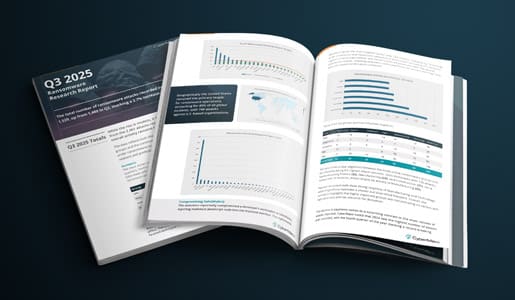Consider a typical security operations center (SOC). Dashboards flash with alerts. Network log data piles up by the second. And suspicious activity gets constantly detected (and investigated). The security analysts work tirelessly, day in and day out.
But after a while, your board asks one simple question: “Are we more secure?” The reality is that business leaders want results (security outcomes, not activity reports). And it isn’t about automated alerts or fancy notification systems.
It’s why technical metrics (like detection rates) ultimately fail to answer the core question. Executives need business security metrics that prove risk reduction and value. So it’s time to bridge the gap.
Why Business Security Metrics Matter
Cybersecurity leaders (CISOs or security officers) have traditionally been the “black sheep” of the C-Suite. The board didn’t know how to evaluate performance or ask the right questions because cybersecurity was nuanced to them.
Fast-forward to today, and boards and investors scrutinize cybersecurity as they do any business function. They expect clear proof of performance. Unfortunately, technical jargon creates a dangerous disconnect.
The Disconnect Between Technical and Business KPIs
Most SOC dashboards present metrics without meaningful context. They track numbers like “alerts generated” or “escalations reported,” but not what those figures actually mean. But does a CFO really care about those numbers? Or do they just want to know whether the company’s risk is actually decreasing and whether those security tools were money well spent?
And a CMO simply wants to ensure that the brand’s reputation is intact and customer trust remains unshaken. It’s not about how many phishing attempts you blocked last week, just like a CEO wants assurance that their strategic vision is safe from disruption.
These disconnects obscure the actual value of your security investments.
The Executive Lens on Cybersecurity
For a Chief Revenue Officer (CRO), measuring performance is easy. Revenue increases, and they’re probably doing a good job.
But executive reporting on security performance isn’t as clear-cut. Yet, CISOs face growing pressure to quantify risk. Boards want to see metrics tied to cyber risk reduction, like financial health and operational resilience—a clear return on security investments.
So how do you get there?
Core Business Security Metrics for MDR Success
Justifying the managed detection and response (MDR) investment? Demonstrate value by shifting the focus to outcomes, translating MDR KPIs into business terms.
Time-to-Response
When a threat is detected, how quickly does a SOC analyst respond? The “R” in MDR is the most critical piece during the point of compromise. Quick time to action and thorough time to response is necessary to ensure complete protection.
There’s also a clear ROI of efficient response — something easily sharable with executives.
Time-to-Containment
How fast can you find and contain a threat? The mean time to respond (MTTR) ties directly to financial performance. The longer it takes to remediate a data breach, the worse its impact.
Breaches found and contained in under 200 days cost an average of $3.87 million. Post-200 days, the average cost increased 29% (around $5.01 million)
In security, time really is money. And time-to-containment highlights your resiliency. For example, imagine you made investments that helped with rapid response and ransomware isolation. That could prevent a catastrophic outage. The security team can contain a compromise in a single department so core business operations continue running. It’s not just about stopping attacks, but ensuring the business can endure and continue to operate financially in the face of them.
Risk Reduction
Shrink the attack surface, lower the risk. But it isn’t about counting vulnerabilities. Measuring the decrease in the attack surface can demonstrate a quantifiable drop in risk exposure.
For example, breaches targeting shadow IT (untrackable assets or users) are prominent and cost typically $4.2 million per incident. But if MDR can help find unknown IT assets and reduce vulnerabilities (lowering the overall attack surface), you can prove resilience to the board.
Loss Avoided
Frame your success in terms of disasters averted. Then calculate the cost.
Lost revenue from potential downtime? Regulatory fine for non-compliance? Churned customers from reputational damage? And what about prospective customers? Is there lost potential deal value in your sales pipeline? These can all add up and be detrimental to an income statement.
Preventing a single attack can save millions, turning your security program from a cost center into a value protector. And as a business driver? Solid security directly lets you pursue growth and new opportunities safely. You can enforce your desired risk appetite without creating new bottlenecks.
Efficiency Gains
MDR should make your security operations leaner. Less time chasing false positives means more time to focus on strategic work. For instance, implementing proactive security via continuous threat exposure management (CTEM).
And they’re not the only ones affected. IT teams are often needed for system access during response scenarios. Limit the false positives, and they too can spend more time on strategic projects (like migration and modernization).
Framed properly, an efficient SOC proves smarter spending.
Turning MDR Data into Executive Reporting
Raw data is useless without context. And because cybersecurity is a highly technical field, you’ll need to translate the “industry lingo” into a language leadership understands.
Framing Outcomes in Financial Terms
The main language of the C-suite is money, so present metrics as a cost-avoidance, ROI, and revenue protection mechanism.
For instance, you blocked 1,000 phishing threats from entering the network. Instead, you protected the $2 million of breach costs. And instead of patching 38 vulnerabilities in a customer self-service platform, you ensured $1.5 million of revenue wasn’t lost due to a site outage and upset customers.
And because MDR takes care of escalations for you, you can highlight how your team doesn’t have to spend time chasing false positives. That’s hours of productivity given back to them each week to focus more time on mission-critical objectives.
Storytelling With Metrics
Numbers alone can be dry. So combine them with a narrative.
Bragging about a 60-minute MTTR rate? Highlight a recent incident where that metric came into play. Perhaps ransomware infiltrated your network, but it was unable to deploy due to your swift response. Or an executive’s email account was hacked, but nothing happened because you took back control almost instantly.
Sharing specific scenarios provides clarity and makes the value tangible. (Example of how this is done: Tales from the SOC | CyberMaxx)
Benchmarking Against Industry Standards
How does your cybersecurity performance compare to competitors? The board wants to know. And frameworks showcasing capabilities against peers can add to your credibility.
Is your alert time respectable within the industry? How about the number of threats contained per week?
Providing essential context for board discussions demonstrates your industry awareness and results-driven approach.
Building a Culture of Business-Aligned Security Metrics
The CISO’s widespread adoption into the C-suite didn’t start until the 2010s. Aligning security with leadership priorities is still an evolving process. Only a cultural change (not just reporting new metrics) will do the trick.
Collaboration Across IT, Finance, and Risk Teams
Buy-in from the board, investors, and executive leadership sets a foundation for a culture change.
Security leaders must work with finance to quantify risk. Risk teams need to get brought in to define and align outcome-focused security KPIs. And IT goes hand-in-hand with security teams who will ultimately implement the controls and harden the systems.
Cross-department collaboration ensures everyone speaks the same language and nothing gets “lost in translation.”
Continuous Improvement Through Metrics
Business security metrics don’t stay fixed. Refine your KPIs as your business and the threat environment change. Regularly ask: “Do these KPIs still prove we manage risk effectively?”
Maybe you prioritized mean time to detect (MTTD) for years. But after facing a wave of ransomware, you realize time-to-contain directly measures your ability to stop encryption and protect revenue.
Measuring What Matters Most
The era of measuring security by alerts is over. Executives value business security metrics highlighting risk reduction, cost savings, and operational resilience.
CyberMaxx MDR extends beyond technical activity. We actively demonstrate business outcomes so security leaders can communicate MDR value in the C-Suite’s language.





